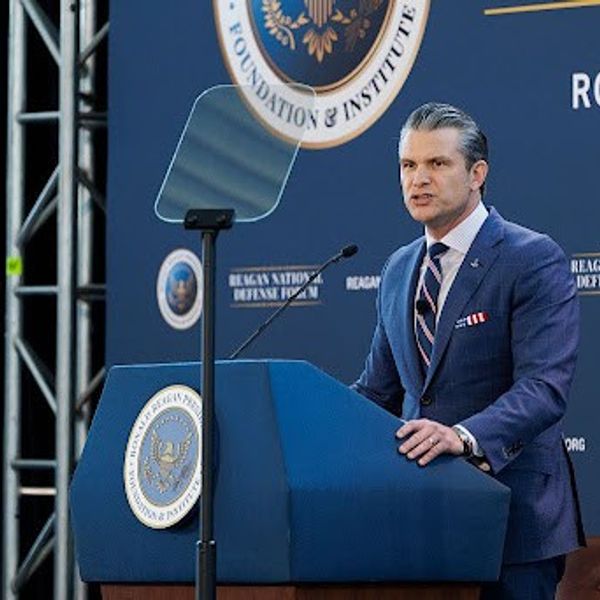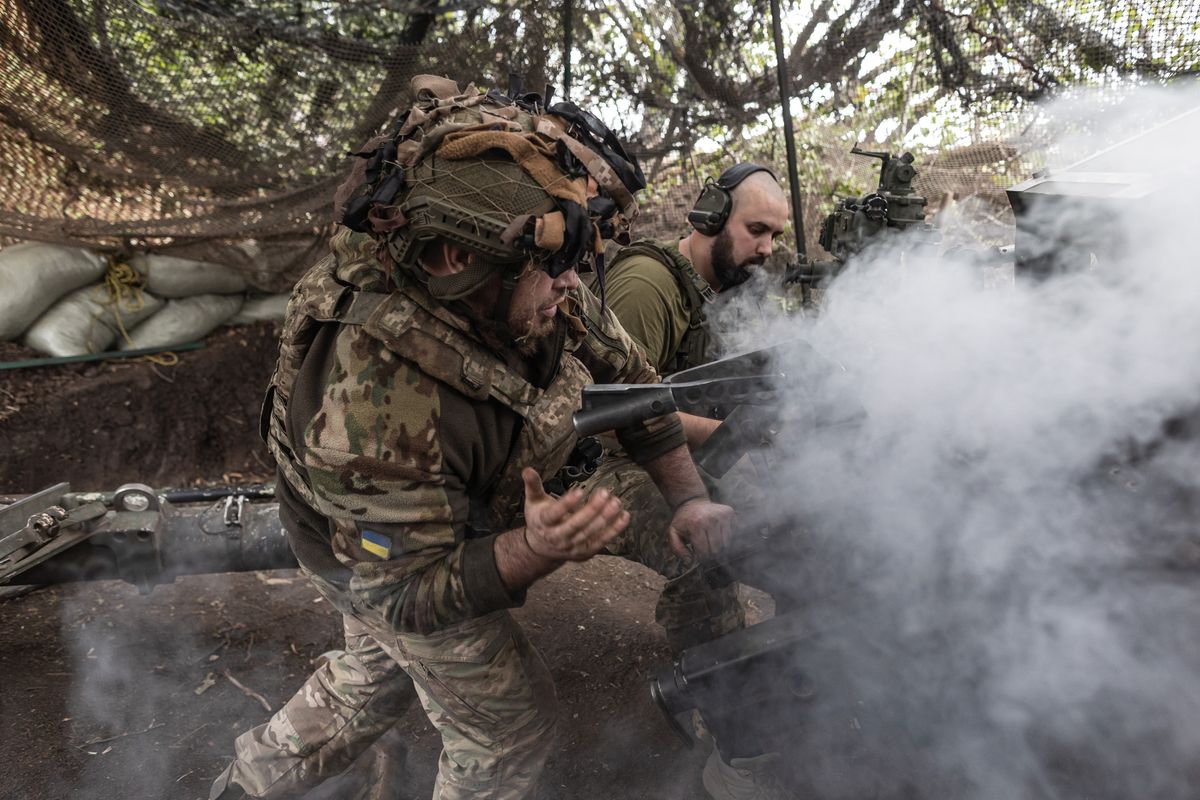OPINION — Defense Department senior officials last week described plans to increase testing for Covid-19 over the next few months, prioritizing higher risk forces but eventually covering all [DoD] personnel in a process that could set an example for the country as a whole.
“We're continuing to develop our testing capabilities,” Jonathan Hoffman, Assistant to the Secretary of Defense for Public Affairs told Pentagon reports last Friday. “We're going to be doing that for — for months and months, going forward, as we ensure that we have the capability and we have the capacity and the stockpiles needed for — for testing our forces.”
On April 9, Joint Chiefs Chairman Gen. Mark A. Milley told reporters that testing was running at about 9,000 tests a day but that he hoped to ramp up “to about 60,000 tests here in about 45 days or so.”
“We're moving from a diagnostic focus to a diagnostic plus screening focus,” Air Force General John E. Hyten, vice chairman, Joint Chiefs of Staff told a Pentagon press conference last Wednesday.
“In other words,’ Hyten continued, “that means we have the ability to expand our testing capabilities to wider military populations, prioritizing the highest risk to forces and ensuring our strategic mission assurance. And as testing supplies become more prevalent over the coming weeks and months, we'll continue to apply that testing, along with social distancing, facial coverings, quarantines and other things…where necessary, and we'll work our way through tiers,” of which there are four.
Tier one includes forces critical to national capabilities such as our Triad of strategic nuclear forces. Tier two will involve the testing of military units engaged and already fielded around the world. Tier three includes forward-deployed and redeploying forces, and tier four includes all other forces.
Hyten said, “We'll get through all of the tier ones this month and then we'll — I think we'll rapidly get into tier two and tier three. To get to the entire force, the 1.4 million active duty and the entire Guard and Reserve, is going to take us into the summer, but I think we'll get to the deploying, redeploying forces, the forces engaged, all of the tier one forces next month.”
Under the testing program, the tier one crews of strategic nuclear submarines and some cruise missile submarines go into isolation for 14 days prior to the start of a patrol. They then are tested before they board and actually set sail.
The same 14-day isolation plus testing before deploying is being done with Air Force officers who control strategic ICBMs from underground silos. The 14-day isolation plus testing before going on duty applies also to pilots for strategic bombers and rapid deployment, reserve counterterrorism forces.
Defense Secretary Mark Esper has included in tier-one, the testing of recruits coming into the system through basic training and advanced individual training (AIT). Esper told reporters, “The ability to test them is important for future readiness, because those are soldiers, sailors, airmen and Marines we need to go through AIT and all those things to get — to flesh out our units, particularly high demand, low density units.”
Back in March, one training battalion at Fort Jackson, S.C. turned up with a cluster of 50 positive Covid-19 cases, which forced the Army to delay taking new recruits into a planned training cycle scheduled to begin April 6.
Under a new process that’s been put in place, new recruits will go into a14-day quarantine after being processed and screened at their Military Entrance Processing Station. After coming on post, they will go into controlled monitoring, where they do some training in a group, but have limited exposure to other soldiers on that base.
“The philosophy behind it is to create a safety bubble where there’s minimum exposure to other soldiers, so if someone does become positive for Covid-19, it's a very, very small amount of other soldiers that they may have infected. And that's how we'll keep the spread of the virus down,” Army Chief of Staff Gen. James McConville told reporters April 16.
Deputy Defense Secretary David L. Norquist told reporters that the 14-day quarantine, which could run to 21 days depending on the risk tolerance, is “to identify those who are infected but are not yet showing it.” He added, “Prior to leaving quarantine, we will conduct a swab test and a temperature check to identify individuals who are infected, but still do not show it. These are often referred to as asymptomatic.”
Norquist described that much is still to be discovered about the virus through testing.
He said, “We designed our approach this way, which is you do the quarantine first. If they are positive, you give it the maximum chance to develop. Now, one may decide is 14 days enough? This is one of the things we're just going to learn…that after 14 days when you test positive, are you still contagious or are we finding remnants of something your body fought off several days earlier?”
Norquist continued, “When I talk about our research, it's to understand how long are you contagious? If you're asymptomatic, are you contagious and at what periods? Can you get it a second time?”
Norquist also pointed out that the department does not yet have enough equipment and supplies to carry out the increased testing it plans.
“We are working with vendors to increase swab production from 3 million per month to 20 million per month,” he said, “and moving ahead, we're working with vendors to evaluate increasing production of other PPE items as well as the reagents for test kits and active pharmaceutical ingredients.”
The Defense Department and the services are also seeking to develop therapeutics and vaccines for the Covid-19 virus. To aid in that search, Norquist said its researchers are “studying Covid-19 in selected recruits and other populations on a volunteer basis to identify asymptomatic and pre-symptomatic prevalence of the infection; investing in innovative diagnostic capabilities and new medical countermeasures to detect, prevent and treat Covid-19.”
Researchers at Fort Detrick’s research institute, the Army’s premiere infectious diseases lab, are working on a more sensitive test that could detect the coronavirus in people who have no symptoms. That could lead to a critical step in getting the nation back to “a new sense of normal,” John Dye, the lab’s chief of viral immunology told McClatchy newspapers.
As with other crises, the Defense Department is planning to carry out an after-action review when the coronavirus threat diminishes.
Joint Chiefs Chairman Milley told reporters, “We hope to lead an interagency whole-of-government type after-action review because there's going to be lots and lots and lots of lessons learned, at the operational, logistical level, public affairs, narratives, how you deal with subs, and ships, and planes and brigades, and so on and so forth. So there's going to be a lot of lessons from out of this.”
He said it was “too early right now to do that,” but “we've activated some of our lessons-learned units to do that.”
The Navy, however, has already learned valuable lessons from the episode involving the aircraft carrier USS Theodore Roosevelt as shown in the way it’s currently handling a similar virus outbreak on the destroyer USS Kidd.
When the Roosevelt’s commanding officer, Capt. Brett Crozier, reacted to discovery that a crew member had coronavirus while the carrier was at sea, Crozier sought help from his superiors. Their response was slow as the virus spread from a few sailors, to 93 and finally 856 of the ship’s 4,850 crew.
Last week, the destroyer USS Kidd, currently deployed in the eastern Pacific as part of Southern Command’s anti-trafficking operations, reported Covid-19 cases aboard. The Navy, this time, within 24 hours, flew an eight-person, specialized medical evaluation team to the ship to conduct testing. On Friday, Defense Spokesman Hoffman told reporters the ship was “preparing to return to port [SanDiego], where they will undertake efforts to clean the ship. They will remove a portion of the crew from the ship and work to get everybody back to health and get the ship back to sea.”
On Monday, the Navy reported 47 of the Kidd’s sailors had tested positive, up from 17 on Friday, and tests continued. Two sailors had been medically-evacuated to the U.S. Meanwhile, sailors aboard were wearing N95 masks and protective gear and the USS Makin Island, an amphibious assault ship was on its way to meet the Kidd carrying ICU capacity and ventilators along with additional testing capability.
Hoffman said Friday, “The Navy has lessons learned from — from prior experience with the — with the Covid crisis and…has been quickly applying those to this case, so keep your fingers crossed.”
Read more expert-driven national security opinions, insight and analysis in The Cipher Brief














